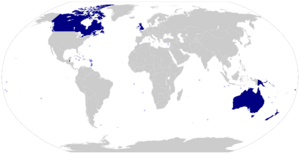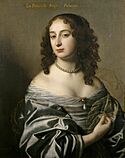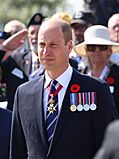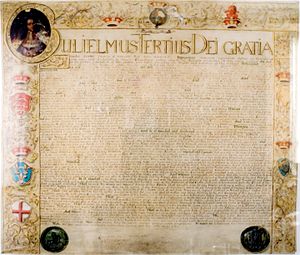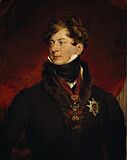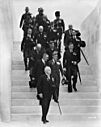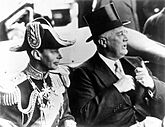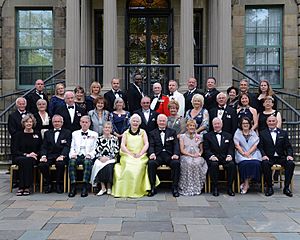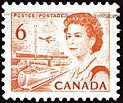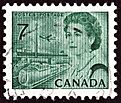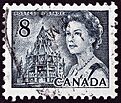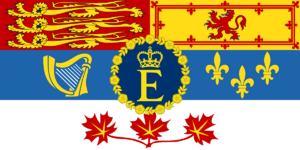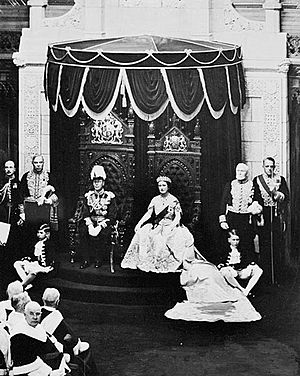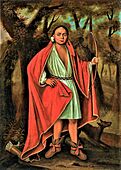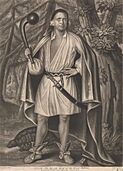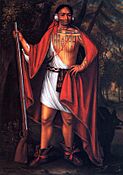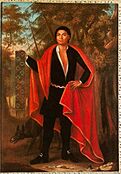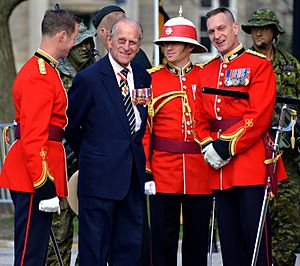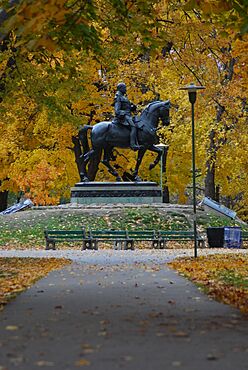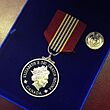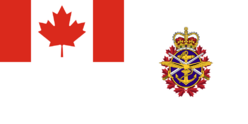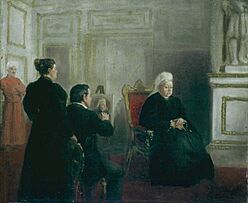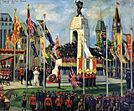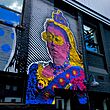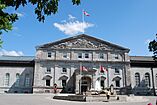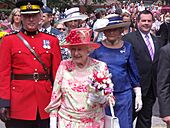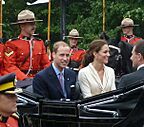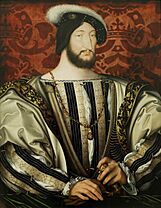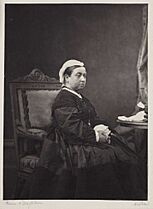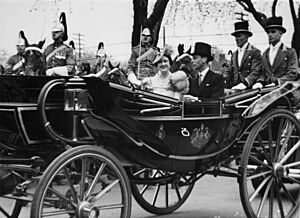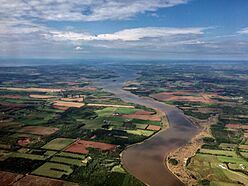Monarchy of Canada facts for kids
Quick facts for kids King of Canada |
|
|---|---|
| Roi du Canada | |
|
Federal
|
|

Arms of the King of Canada
|
|
| Incumbent | |
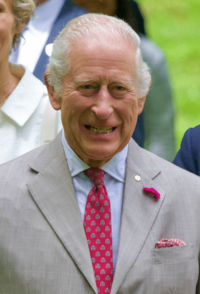 |
|
| Charles III since 8 September 2022 |
|
| Details | |
| Style | His Majesty |
| Heir apparent | William, Prince of Wales |
The monarchy of Canada is Canada's way of government. It is led by the Canadian sovereign, who is the head of state. This system is a key part of Canada's independence and its constitutional federal structure. It also supports Canada's parliamentary democracy, which is like the British system.
The monarchy is the base for the government's three main parts: the executive (King-in-Council), the legislative (King-in-Parliament), and the judicial (King-on-the-Bench). This applies to both the federal government and the governments of Canada's provinces. The current monarch is King Charles III, who became King on September 8, 2022.
Even though the same King is also the monarch for 14 other independent countries in the Commonwealth of Nations, each country's monarchy is separate. So, the King is officially called King of Canada when he is acting for Canada. He and other members of the royal family do public and private duties in Canada and abroad as Canada's representatives. However, only the monarch has a role in Canada's constitution.
The King lives in the United Kingdom. Most of his royal duties in Canada are carried out by his representative, the governor general of Canada. In each of Canada's provinces, the monarchy is represented by a lieutenant governor. Territories have commissioners who represent the federal government directly.
The King's approval is needed for many government actions to become legal. For example, laws passed by Parliament need his royal assent to become official. This power comes from the Canadian people through democratic traditions. The King's role is to protect the rights, freedoms, and democratic system of Canadians. This means governments serve the people. The King usually acts on the advice of the Cabinet. His duties are mostly carried out through Parliament, judges, and justices of the peace. Sometimes, the King or his representative might need to act directly to prevent unconstitutional actions. The King helps keep Canada's government stable and fair, preventing the abuse of power.
Canada's monarchy is one of the oldest in the world. Parts of Canada have been under a monarchy since the 15th century. This happened because of colonization by the French and British empires. After the British took over New France, the British monarchy became the main power. Except for a short time in Newfoundland, no part of Canada has ever been a republic. The monarchy is a deeply rooted part of Canada's government. It is sometimes called the Maple Crown or Crown of Maples, showing its unique Canadian identity.
Contents
- The Monarchy's Role in Canada and Beyond
- Monarchy in Federal and Provincial Governments
- The King as Canada's Symbol
- The King's Role in Government
- The Monarchy's Cultural Impact
- The Royal Family and Household
- Royal Residences and Staff
- History of the Monarchy in Canada
- How Canadians See the Monarchy
- Debating the Monarchy
- Images for kids
- See also
The Monarchy's Role in Canada and Beyond
How the Monarchy Connects Countries
The King is the monarch for 14 other countries in the Commonwealth of Nations. Since he lives in the United Kingdom, viceroys represent him in Canada. The governor general of Canada acts for him federally, and lieutenant governors act for him in each province. They perform most royal duties, even when the King is in Canada. The King can also do Canadian duties when he is abroad.
The role of the governor general changed over time. They used to represent both the King and the British government. After the First World War, Canada wanted more independence. This led to the Statute of Westminster 1931, which made Canada's monarchy separate from the UK's. Now, only Canadian federal ministers advise the King on Canadian matters. The King gets weekly updates from the governor general. This means the monarchy in Canada is a Canadian institution, even if it's sometimes still called "British" for historical reasons.

This separation is shown in many ways. The King has a special Canadian title. When he or other royal family members act for Canada, they use Canadian symbols. These include the national flag, unique royal symbols, and armed forces uniforms. They also use Canadian planes or vehicles for travel. When they arrive at a Canadian event, Canadian officials take over their escort.
The King only uses Canadian money for his duties when he is in Canada or acting as King of Canada abroad. Canadians do not pay him or any other royal family member for their personal income or for their homes outside Canada.
The monarchy in Canada has five main parts:
- Constitutional: Using royal powers to call or end Parliament, or approve laws.
- National: Giving speeches, handing out awards, and taking part in Remembrance Day events.
- International: Being head of state in other Commonwealth countries and head of the Commonwealth.
- Religious: The King's title includes "by the grace of God," and he encourages tolerance of different beliefs.
- Welfare and Service: Royal family members support charities and give royal patronage to groups.
Who Becomes King or Queen?
Like in other Commonwealth countries, the next in line to the Canadian throne is William, Prince of Wales. His oldest child, Prince George, follows him in the line of succession.
When a Monarch Passes Away
When the monarch dies, their heir immediately becomes the new sovereign. No special ceremony is needed right away. The federal government follows a manual for these changes.
The governor general, with the King's Privy Council, publicly announces the new monarch. This happens at Rideau Hall soon after the previous monarch's death. Since 1931, Canada's announcements are made under Canadian law. For King Charles III's accession, the Chief Herald of Canada read the royal proclamation. If Parliament is meeting, the Prime Minister announces the death and asks for a joint message of sympathy to the new monarch.
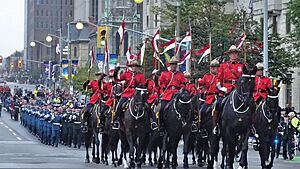
A period of mourning follows. Portraits of the deceased monarch are draped in black. Government staff wear black armbands. The Prime Minister is in charge of Parliament's actions during this time. The Canadian Broadcasting Corporation has plans for national broadcasts to cover the event. Funerals for Canadian monarchs happen in the United Kingdom. Commemoration services are held across Canada by federal and provincial governments. The day of the sovereign's funeral is usually a federal holiday.
The new monarch is crowned in the United Kingdom. This ancient ritual is not needed for a sovereign to start reigning. In Canada, officials who work for the Crown keep their jobs when a monarch dies. They do not need to take the Oath of Allegiance again. All references to previous monarchs in Canadian laws still mean the current reigning sovereign. This is because, in law, the Crown never truly dies.
Rules for Succession
Changes to the rules of who becomes monarch need all Commonwealth countries to agree. Succession is set by laws like the Bill of Rights, 1689 and the Act of Settlement, 1701.
In 1936, King Edward VIII gave up his throne. His future children were removed from the line of succession. Canada's government insisted that changes to succession laws needed Canada's approval. This showed that Canada's monarchy was separate. The Act of Settlement is considered part of Canadian law.

The Supreme Court of Canada has said that the Bill of Rights, 1689, is part of Canadian law. Courts have also confirmed that the Act of Settlement, 1701, is part of Canada's laws. This means the rules for who becomes monarch are part of Canada's constitution.
Canada agreed to the 2011 Perth Agreement. This agreement changed succession rules to remove male preference and allow marriage to a Roman Catholic. Canada's Parliament passed the Succession to the Throne Act, 2013 to agree to these changes. Courts have upheld this law, saying that Canada's line of succession should match other Commonwealth countries.
Some rules, like the ban on Catholics becoming monarch, have been challenged. However, Canadian courts have upheld this rule. They say it is constitutional and any change would need a political agreement, not a court ruling.
What if the Monarch is Too Young or Sick?
Canada does not have its own laws for a regency. A regent would rule if the sovereign were a minor (too young) or unable to rule. The UK's Regency Acts do not apply to Canada unless Canada asks them to. The Letters Patent, 1947 allow the governor general to use almost all of the monarch's powers in Canada. So, the governor general would continue to act as the King's representative, even if the King were a child or sick.
Royal Visits Abroad
The King, as Canada's sovereign, has made official visits to other countries. Sometimes he represents other Commonwealth countries on the same trip. Here are some examples:
| Visit to | Date | Monarch of Canada | Received by | Type |
|---|---|---|---|---|
| 26 July 1936 | King Edward VIII | President Albert Lebrun | Official | |
| 7–11 June 1939 | King George VI | President Franklin D. Roosevelt | State | |
| 17 October 1957 | Queen Elizabeth II | President Dwight D. Eisenhower | State | |
| 26 June 1959 | Official | |||
| 6 July 1959 | Governor William Stratton | State | ||
| 6 June 1984 | President François Mitterrand | Official | ||
| 1994 | Official | |||
| 6 June 2004 | President Jacques Chirac | Official | ||
| 9 April 2007 | Prime Minister Dominique de Villepin | Official | ||
| 6 July 2010 | Governor David Paterson | Official |
Monarchy in Federal and Provincial Governments
Canada's independence began in the early 17th century. The idea of Parliament's power, which includes the monarch, came from Britain. This idea was brought to each province. However, the Charter of Rights and Freedoms later made the law supreme in Canada. Still, the King is Canada's sovereign.
Canada's monarchy was set up when the country was formed in 1867. The King holds the government's power. The Crown is the base of Canada's constitution and democracy. Even though Canada is a federation, the monarchy is the same across all parts of the country. It links the federal and provincial governments. The Crown is "divided" into 11 legal parts: one federal and 10 provincial. For example, if someone sues the federal government, it's formally called His Majesty the King in Right of Canada.
Any change to the monarch's role or his representatives in Canada needs the approval of the Senate, the House of Commons, and all provincial legislatures. The Crown is seen as a shared and balanced power. It helps Canada's different regions and peoples live together peacefully.
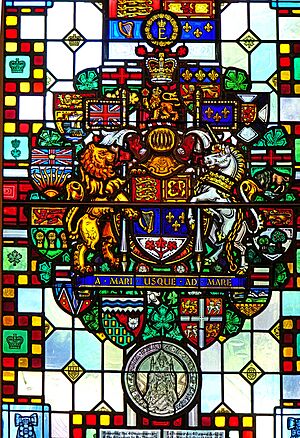
The Crown is above politics. It exists to protect the constitution and government system. Power rests with an institution that protects all citizens. The King and his representatives usually "act by 'not acting'". They hold power but don't use it directly. This keeps them neutral, so they can be fair if there's a big problem in the government. The Crown unites Canada and protects democratic rights.
However, the King and senior royal family members have fewer freedoms than other Canadians. These include freedom of religion, expression, travel, career choice, marriage, and privacy.
The King's power comes from laws and his special royal powers. Courts have ruled that the Crown has the same abilities as a person. But it must use its powers for the public good and within legal limits.
The governor general is chosen by the King on the advice of the federal Prime Minister. Lieutenant governors are chosen by the governor general on the advice of the federal Prime Minister. Commissioners for the territories are chosen by the federal government. They are not personal representatives of the King because territories are not sovereign.
What is Sovereign Immunity?
Since 1918, the federal Crown has been protected from provincial laws. This means the King, in his role as head of the federal government, cannot be sued under provincial laws. Also, the Crown in each province is usually protected from courts in other provinces.
However, lieutenant governors do not have the same protection as the King for things not related to their official duties. This was seen in the case of former Lieutenant Governor of Quebec Lise Thibault.
The King as Canada's Symbol
The King is seen as the living symbol of the Canadian state. He represents all Canadians, no matter their political views. Because of this, he and his representatives must stay neutral in politics.
The King has two roles: his natural body (a person who can get sick and die) and his political body (the Crown, which never dies). The Crown and the monarch are connected but also separate. The King is always "on duty," even in private. Terms like the state, the Crown, and His Majesty the King in Right of Canada all mean the same thing.
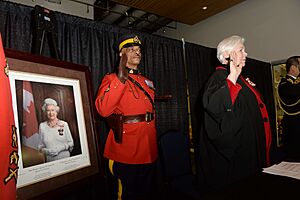
The King is at the top of Canada's official order of importance. As the symbol of the state, he is the focus of oaths of allegiance. Many government employees and new citizens take this oath. This oath is a promise of loyalty to the King. In return, the King promises to govern Canadians according to their laws and customs.
Who is Canada's Head of State?
Official sources, judges, and experts agree that the King is Canada's head of state. The governor general and lieutenant governors are his representatives. Some people have called the governor general the "head of state," but they are still under the King. Since 1927, governors general have been treated like heads of state when visiting other countries.
Some people at Rideau Hall have tried to say the governor general is the head of state. But the document they refer to only says the governor general can "act on the Queen's behalf." This has caused confusion about who is most important at events.
Polls have shown that many Canadians are unsure who their head of state is. In 2008, 42% thought it was the Prime Minister, 33% thought it was the governor general, and only 24% knew it was the Queen. This shows a lack of understanding about the monarchy.
Royal Symbols and Coats of Arms
The Arms of His Majesty the King in Right of Canada is the official coat of arms of Canada. It is a symbol of Canada's independence. It looks like the UK's royal coat of arms but has Canadian and French elements.
The royal standard is the King's official flag. It shows the royal arms. This flag is more important than all other flags in Canada. It is flown on buildings, ships, and vehicles when the King is there. The royal standard is never flown at half-mast because there is always a sovereign. When one dies, the next one immediately becomes sovereign. Parts of the royal arms are also on the governor general's flag and the lieutenant governors' flags.
The King's Role in Government
Canada's constitution is based on the British parliamentary system. The King's role is legal and practical, but not political. The King has all the powers of the state, called the royal prerogative. Canadians are considered subjects of the Crown. However, the King does not rule alone. His power is shared by the government's executive, legislative, and judicial parts. The King is seen as a "guardian of constitutional freedoms." His job is to make sure the political process works correctly.
The Great Seal of Canada shows the King's power given to the government. It is used on important state documents. The King is also the head of the Canadian Armed Forces. The governor general carries out the duties of the commander-in-chief.
The King and the Executive Branch
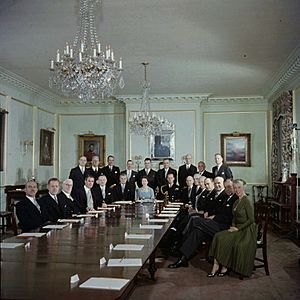
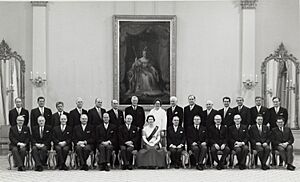
The government of Canada is formally called His Majesty's Government. It is the King acting on the advice of his Privy Council. This is known as the King-in-Council. One of the Crown's main jobs is to make sure there is always a democratically elected government. This means appointing a prime minister to lead the Cabinet. The King is kept informed by his ministers and meets with them when possible. These communications are private to protect the King's neutrality.
The King usually follows the advice of his ministers. This means the King reigns but does not rule. The Cabinet rules "in trust" for the King. However, the King or his representatives can use their special powers in rare cases of constitutional crisis. This ensures the government follows the constitution. For example, in 1926, the Governor General refused his prime minister's advice to end Parliament.
The King's powers also cover foreign affairs. This includes approving treaties and declaring war. He also grants Canadian Canadian passports. The King also creates honours and awards.
The King and Parliament
All laws in Canada belong to the King. The King is one of the three parts of the Parliament of Canada, called the King-in-Parliament. However, the King and governor general do not take part in making laws. They only give royal assent to bills, which is needed for a bill to become law.
The governor general is also responsible for calling the House of Commons to meet. Either the governor general or the King can end a parliamentary session or dissolve Parliament. After Parliament is dissolved, the governor general usually calls for a general election. The new parliamentary session begins with a Speech from the Throne. Members of Parliament must take the Oath of Allegiance before they can take their seat. The official opposition is called His Majesty's Loyal Opposition. This shows that they are loyal to the King, even if they oppose the government.
The King cannot create new taxes without Parliament's approval. Parliament also needs the Crown's permission to discuss bills that affect the King's powers.
The King and the Courts
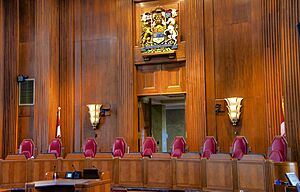
The King is responsible for justice for all his subjects. He is traditionally seen as the fount of justice. His role in the Canadian courts is called the King on the Bench. The Arms of His Majesty in Right of Canada are usually displayed in Canadian courtrooms. A portrait of the King is also often there.
The King does not personally rule in court cases. This is done by officers of his court in his name. The idea that the King "can do no wrong" means he cannot be charged in his own courts. Canada inherited this idea from British law. However, laws have reduced this protection over time. The Crown can now be sued in many cases, just like a regular person.
The King also has the power to grant immunity from prosecution, mercy, and pardons. Since 1878, pardons have always been given on the advice of ministers.
The Crown and Indigenous Peoples

Canada's constitution includes treaties between the Crown and Canada's First Nations, Inuit, and Métis peoples. These groups often see their connection as being with the continuous Crown of Canada, not with changing governments. This link is meant to last "as long as the sun shines, grass grows, and rivers flow."
This connection goes back to the first meetings between North American Indigenous peoples and European settlers. Treaties were made between the monarch and Indigenous nations. The main guide for relations today is King George III's Royal Proclamation of 1763. This proclamation affirmed Indigenous land rights. It also said that Indigenous groups were self-governing units in a "nation-to-nation" relationship with non-native governments, with the monarch as a link. The minister of Crown-Indigenous relations manages these agreements.
The link between the Crown and Indigenous peoples is sometimes shown through ceremonies. Gifts have been exchanged, and Indigenous titles have been given to royal and viceregal figures. Indigenous leaders have met with royal family members to discuss treaty matters. Public ceremonies with the King or other royal family members are used to present concerns. After protests and the Truth and Reconciliation Commission, there is a focus on improving relations between nations.
Hereditary Chiefs
Hereditary chiefs are leaders in First Nations whose positions are passed down through families. Most First Nations have this system. These roles come from traditional Indigenous governance before Canada was colonized. Early European explorers sometimes called these leaders "kings."
Today, hereditary chiefs are not sovereigns. The Supreme Court of Canada says the Crown holds power over all of Canada. However, hereditary chiefs often have authority over traditional lands outside of reservation land. They are important for keeping a First Nation's traditions, laws, and culture alive. The Crown keeps formal relations with Canada's hereditary chiefs, especially on treaty rights.
The Monarchy's Cultural Impact
Royal Visits and Duties

Members of the royal family have visited Canada since the late 1700s. They come for military events, to serve as governor general, or for official royal tours. These tours "reinforce the country's collective heritage." At least one royal tour happened every year between 1957 and 2018.
The monarchy's "welfare and service" role is important today. It has changed from a very formal, imperial role to a more visible head of state who interacts with people. Royal walkabouts, where royals meet the public, are a key part of tours. This tradition started in 1939 with Queen Elizabeth in Ottawa. Important milestones or Canadian celebrations often involve the King. Other royal family members attend smaller events. A household helps the King during his visits.
Official duties involve the King representing Canada at home or abroad. Other royal family members also take part in government ceremonies. The Canadian Cabinet decides when royals participate in Canadian events. The Department of Canadian Heritage plans these events.
Unofficial duties are done by royal family members for Canadian organizations they support. This includes attending charity events or visiting Canadian Forces members. These visits are usually paid for by the organizations. In 2005, royal family members attended 76 Canadian events. Between 2019 and 2022, they did 53 events, with many being virtual due to the COVID-19 pandemic. The governor general and lieutenant governors took part in over 4,000 events in 2019 and 2020.
The King and other royal family members also do public duties in the other 14 Commonwealth countries where the King is head of state.
Symbols, Awards, and Associations
The main symbol of the monarchy is the King himself. His image is used to show Canadian independence and government authority. For example, his image is on currency and in government buildings. The King is also mentioned in songs and toasts. A royal cypher (a special symbol) or a crown is used on buildings, official seals, and military badges. These show the monarchy as the source of authority.
The King is the source of all honours in Canada. The awards have a crown, cypher, or portrait of the monarch. Canada's heraldic authority was created by Queen Elizabeth II. It grants new coats of arms, flags, and badges in Canada. Using the royal crown in symbols needs the King's approval.
Royal family members also serve as ceremonial heads of various parts of the Canadian Armed Forces. This shows the Crown's link with the military. The King is also the Commissioner-in-Chief of the Royal Canadian Mounted Police.
Many Canadian groups are linked to the monarchy. They might have been started by a royal charter, allowed to use "royal" in their name, or have a royal family member as a patron. Some charities have been created as gifts to or in honour of monarchs. Many awards in Canada are named after royal family members. All Canadian coins have the image of the reigning monarch. They also have the Latin phrase Dei gratia Rex, meaning "by the grace of God, King." If the monarch is female, it says regina (queen).
In the 1970s, some symbols of the monarchy were less visible. For example, the Queen's portrait was seen less in schools. This was partly due to changing views on Canada's past. However, other symbols like the Royal Coat of Arms remained. New symbols, like the monarch's royal standard, were created. Canada has worked to make the visual symbols of the monarchy more Canadian.
The Monarchy and Canadian Identity
The monarchy is seen as a unifying point for Canada's history and identity. It connects the country to its past and helps define Canadian patriotism. This link helps make Canadian identity different from American identity. Former Governor General Vincent Massey said in 1967 that the monarchy "stands for qualities and institutions which mean Canada to every one of us."
However, some people have been encouraged to ignore or reject the monarchy. Anti-monarchists claim the Canadian Crown is foreign. But others say the monarchy is "our own by inheritance and choice." They believe it helps Canada stay independent. The Crown allows for different cultures and beliefs to exist in Canada.
The Monarchy in Popular Culture
Art and Sculpture
Canadian artists have created many artworks of Canada's monarchs and royal family. These range from formal portraits to more informal pieces. For example, Frederic Marlett Bell-Smith painted The Artist Painting Queen Victoria in 1895.
Hilton Hassell painted Princess Elizabeth (later Queen Elizabeth II) square dancing at Rideau Hall in 1951. A portrait of Elizabeth II by Lorena Ziraldo was shown in newspapers.
Charles Pachter created a famous painting called Noblesse Oblige in 1972. It shows Queen Elizabeth II on a moose. This painting became a Canadian cultural image. Pachter made many versions of this theme. He said it was a good way to show the Queen of Canada with an animal that is the "monarch of the north." He also made similar pieces with King Charles III and Queen Camilla, and Prince William and Catherine, Princess of Wales. For Queen Elizabeth II's Diamond Jubilee, Pachter made fake postage stamps with his royal paintings.
Portraits of Queen Elizabeth II hung in many hockey arenas after 1952. Three large portraits were in Winnipeg Arena from 1955 to 1999.
Artist Timothy Hoey created a "Canada 150" project in 2017. He painted 150 Canadian icons, including Queen Elizabeth II with beavers, Cheezies, and hockey jerseys. He also painted her in a Vancouver Canucks uniform.
There are also wax sculptures of Queen Elizabeth II in private museums in Canada.
Television
The TV show Rideau Hall aired in 2002. It was about a disco artist becoming governor general.
Canadian comedian Scott Thompson often played a funny version of Queen Elizabeth II on the show The Kids in the Hall. He also voiced her in the animated show Fugget About It.
The Canadian monarchy was made fun of in the "Royal Pudding" episode of South Park in 2011. It showed a spoof of a royal wedding and mentioned "the Queen of Canada." Later, in 2023, the show parodied the Duke and Duchess of Sussex as a prince of Canada and "the wife."
The Royal Family and Household
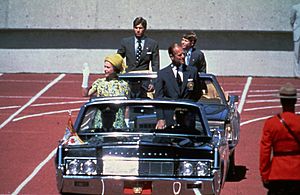
The Canadian royal family includes people closely related to the King. They belong to the House of Windsor. There is no legal definition of who is in the royal family. However, the Canadian government lists "working members of the royal family."
Only the monarch has a title set by Canadian law. Other family members use their UK titles as a courtesy. They are related to other royal families in Europe. They are also members of the British royal family. While media often calls them the "British royal family," the Canadian government says this is not correct, as they are family members of the Canadian monarch. Some members of the royal family are Canadian citizens. The King is considered Canadian. Those who are not Canadian citizens are still considered Canadian. This means they can get Canadian help when abroad.

The idea of a Canadian royal family started after 1931. King Edward VIII was the first monarch to do public duties solely on the advice of Canadian ministers. He dedicated the Canadian National Vimy Memorial in France in 1936. Over time, other royal family members also started performing duties for Canada.
The term Canadian royal family was first used publicly by Queen Elizabeth II in 2002. She said, "I am proud to be the first member of the Canadian royal family to be greeted in Canada's newest territory." Princess Anne and King Charles III have also used this term. By 2011, media in Canada and Britain were using "Canada's royal family."
The Canadian Heraldic Authority created special Canadian symbols for royal family members. This shows that Canada has taken "ownership" of its royal family.
Royal Residences and Staff
Buildings used by the King and his representatives are called Government House. The King's and governor general's official homes are Rideau Hall in Ottawa and the Citadelle in Quebec City. Both have items from the Crown Collection.
British royals have also owned private homes in Canada. For example, Edward VIII owned a ranch in Alberta. Princess Margaret owned Portland Island, which she later gave back to British Columbia.
The King has a Canadian household to help him with his duties. This includes a Canadian secretary, police officers, and ladies-in-waiting. Prince Edward, Duke of Edinburgh, also has Canadian staff. Royal Canadian Air Force VIP aircraft are used for royal travel.
There are three special military regiments linked to the royal household. There are also three chapels royal in Ontario. St Bartholomew's Anglican Church is often used by governors general and sometimes by the King.
Royal Security
The Royal Canadian Mounted Police (RCMP) provides security for the King, the governor general, and other royal family members. This is based on how important the person is and the type of visit. The governor general has round-the-clock security from the RCMP.
History of the Monarchy in Canada
From Colonies to an Independent Nation
The Canadian monarchy's history goes back to the kings of England and Scotland. It also links to the claims of King Henry VII in 1497 and King Francis I in 1534. Former Prime Minister Stephen Harper said the Crown connects Canada to a "majestic past" including the Magna Carta and English common law. Canada has been a territory of a monarch or a monarchy since the early 16th century.
After French colonies in Canada were given to the British, and many loyalists moved north after the American Revolution, British North America became Canada in 1867. This was done by Queen Victoria. After the First World War, Canada wanted more independence. This led to the Statute of Westminster 1931, which made the Canadian monarchy unique. In 1936, Canada had three kings in one year: George V died, Edward VIII became King and then gave up the throne, and George VI became King.
From 1786 to the 1930s, many royal family members visited Canada.
The Canadian Crown Takes Shape
King George VI was the first reigning monarch of Canada to tour the country in 1939. He was with his wife, Queen Elizabeth. Weeks later, the King, on the advice of his Canadian Prime Minister, declared war on Nazi Germany. During the war, George helped boost the spirits of Canadian troops.

Elizabeth II first toured Canada in 1951 as Princess Elizabeth. She later marked many important moments in Canada's history. She opened Parliament in 1957 and 1977. She opened the St. Lawrence Seaway in 1959. She celebrated the Canadian Centennial in 1967. In 1982, she proclaimed Canada fully independent through constitutional patriation. This act made the monarchy a strong part of Canada's constitution.
In the 1960s and 1970s, the rise of Quebec nationalism and changes in Canadian identity led to questions about the monarchy. Some references to the monarch were removed from public view. But, ministers and loyal citizen groups made sure the system stayed mostly the same.
The Queen supported the Meech Lake Accord, which tried to get Quebec's support for the constitution. When it failed, she gave a speech supporting Canadian unity. Before the referendum on Quebec independence in 1995, the Queen was tricked by a radio DJ into saying she wanted the "no" side to win.
Royal family members continued to attend important national events. The Queen marked anniversaries for provinces and opened the 1976 Summer Olympics in Montreal. King Charles III (as Prince Charles) attended the 100th anniversary of Treaty 7 in 1977. He also opened Expo 86 in Vancouver with Diana, Princess of Wales. The Queen and her family opened many Commonwealth Games and visited military regiments.
The Monarchy in the 21st Century
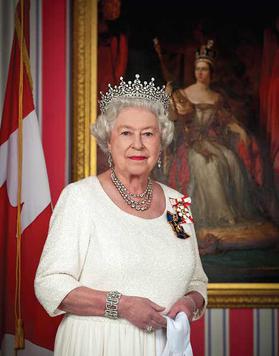
By 2002, celebrations for the Queen's Golden Jubilee were popular. In 2012, Canada celebrated the Queen's Diamond Jubilee, the first since Victoria's in 1897. On September 9, 2015, she became the second-longest reigning monarch in Canadian history. King Charles (as Prince of Wales) represented his mother at Canada's 150th anniversary in 2017.
During the COVID-19 pandemic, the Queen expressed support for Canadians. In 2022, celebrations for the Queen's Platinum Jubilee took place. This was the first time a monarch reached this milestone in Canadian history. Six provinces created their own Platinum Jubilee medals.
The issue of reconciliation with Canada's Indigenous peoples became very important in 2021. Statues of Queen Victoria and Queen Elizabeth II in Winnipeg were damaged. On the first National Day for Truth and Reconciliation, Elizabeth made a public statement. She said she reflected on the "painful history that Indigenous peoples endured." In the same year, the Queen appointed Mary Simon as the first Indigenous governor general. During King Charles's Platinum Jubilee tour, he acknowledged the treatment of Indigenous peoples.
Queen Elizabeth II died on September 8, 2022. Her eldest son, Charles III, became King. The Queen's last public statement was about the 2022 Saskatchewan stabbings. She reigned for almost half of Canada's history since Confederation.
The new King was proclaimed on September 10, 2022, at Rideau Hall. On May 4, 2023, the King met with Governor General Simon and Indigenous leaders. They also attended his coronation two days later.
In May 2025, King Charles III and Queen Camilla visited Canada. The King delivered the speech from the throne. This was the first time a Canadian monarch did this in person since 1977.
How Canadians See the Monarchy
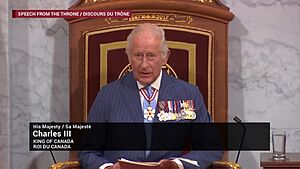
Before the 1970s, Canadians focused more on the monarch as a person. Later, the focus shifted to the monarchy's place in Canada. Experts have noted that Canadians often don't understand the monarchy well. Some groups that oppose the monarchy might spread wrong information. This lack of understanding is part of a wider lack of knowledge about Canadian government.
Some say that the role of the Crown disappeared from school lessons in the 1960s. This might make Canadians less aware of their constitutional monarchy. The monarchy is so common in Canada, with symbols and place names everywhere, that people might not notice it.
Some people think the governor general's role has become too "presidential." This means the Prime Minister often seems more important than the head of state. Many Canadians see the monarch and his representatives as only ceremonial figures. They also still see the King as British, even if they know he is King of Canada. This can weaken the Crown's role in balancing government power. This issue is especially strong in Quebec.
However, there has been a growing interest in the Crown. This is due to events like the 2008 prorogation dispute and increased use of royal symbols. Court cases about the Oath of Citizenship have also brought attention to the monarchy.
Some Canadians have asked the King or governor general to use their powers in ways that go against tradition. For example, in 2013, the leader of the Green Party of Canada, Elizabeth May, asked Queen Elizabeth II to start an inquiry. In 2022, many protesters contacted Governor General Mary Simon to ask her to dismiss the Prime Minister. Simon made a public statement explaining her role.
The relationship between Indigenous peoples and the monarch has been discussed more recently. Some activists have said the monarchy represents colonialism. They might misunderstand the Crown's role in a constitutional monarchy. In Quebec, some politicians see the Canadian Crown as British and foreign. They want to abolish it in Quebec.
Debating the Monarchy
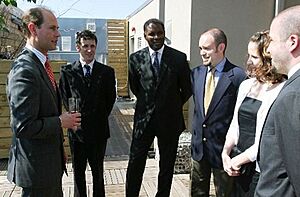
There has not been much national debate about the monarchy in Canada. The King's position is strongly protected by the Constitution Act, 1982. Any big change to the monarchy needs the approval of the Senate, the House of Commons, and all ten provincial legislatures. Abolishing the monarchy might also be complicated because First Nations treaties are with the Crown.
Canada has two main groups that discuss the monarchy: the Monarchist League of Canada (MLC) and Citizens for a Canadian Republic. Other groups also support the monarchy.
Of Canada's four main political parties, the Liberal Party and the Conservative Party do not officially support abolishing the monarchy. The New Democratic Party has no official position. Only some individual politicians and the leaders of the Bloc Québécois party have suggested ending the monarchy.
Opinion polls on the Canadian monarchy have been done since the 1990s. Some polls show less support for the monarchy. However, some questions in these polls are criticized for being unclear or calling the monarchy "British." Both supporters and opponents of the monarchy agree that people's lack of understanding affects opinions.
The idea of a unique Canadian monarch, perhaps from the House of Windsor or a First Nations royal house, has been suggested. But there is no popular or official support for such a change.
Images for kids
-
The sovereign's throne (left) and royal consort's throne (right) behind the speaker's chair—all made in 2017—in the temporary Senate chamber
-
The statue of Queen Victoria at the Manitoba Legislative Building that was destroyed by protesters on Canada Day, 2021
See also
 In Spanish: Monarquía en Canadá para niños
In Spanish: Monarquía en Canadá para niños


